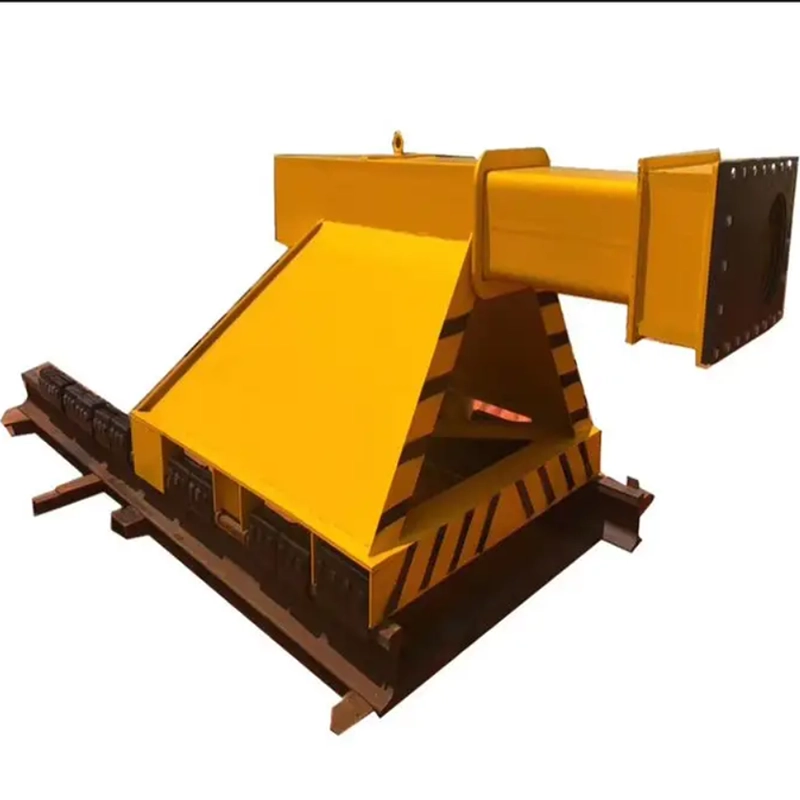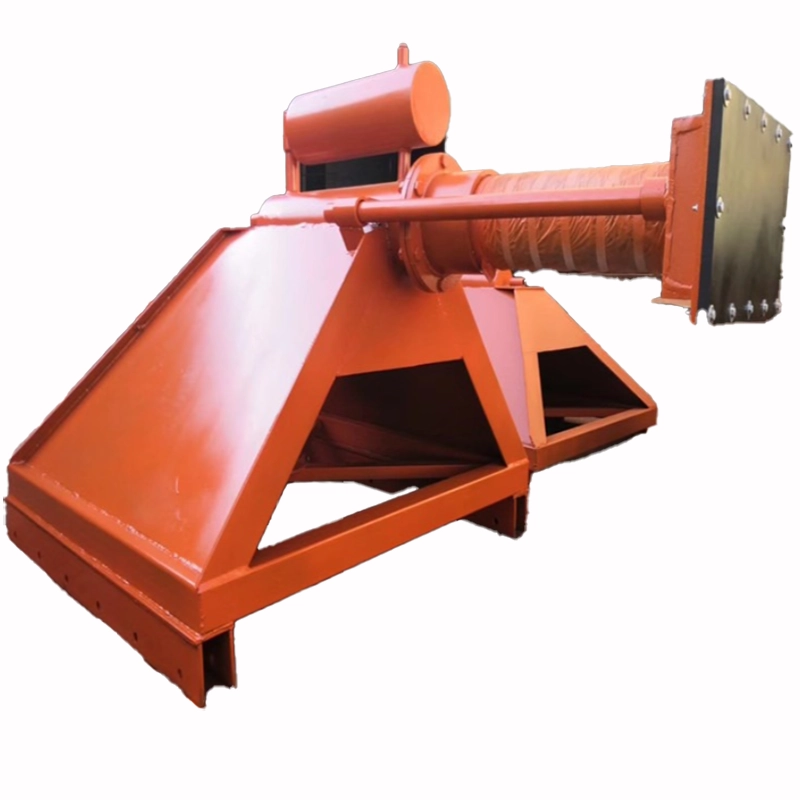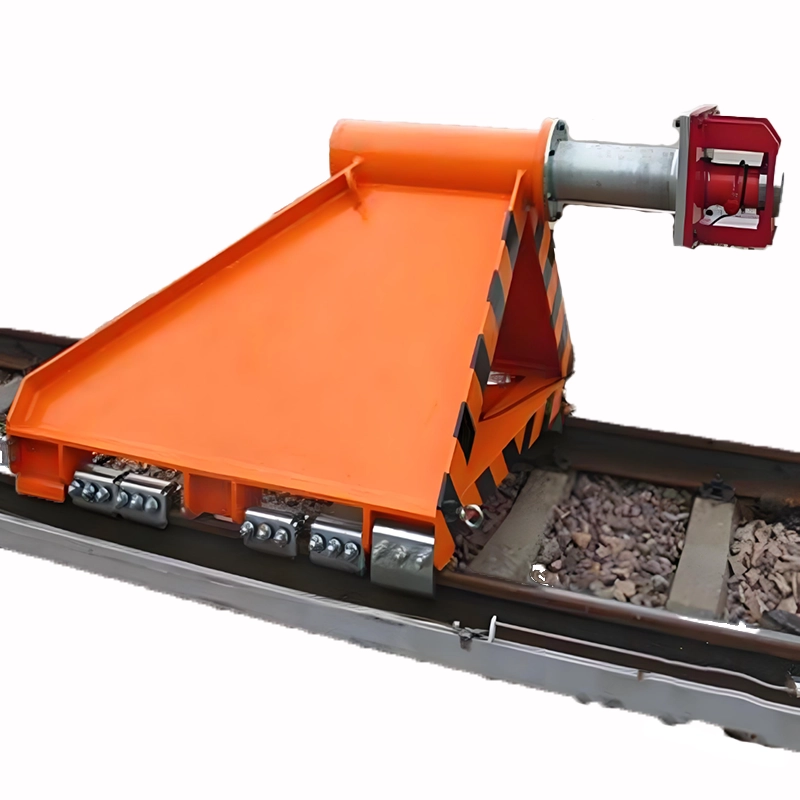Sliding Buffer Stops for Mining
Overview
Sliding buffer stops are engineered end-of-line and transfer-point devices that absorb impact by allowing a controlled axial movement of the buffer block or carriage along a guided track. Unlike fixed stops that take the load at a single point, sliding buffers spread the deceleration over a stroke distance and use mechanical dampers, hydraulic cartridges or spring-damped systems to dissipate energy progressively. This design reduces peak force transmitted to conveyor frames and foundations, lowers shock to the belt system, and often reduces rebound — ideal where heavy, repeated impacts or occasional large single events occur.
KEY ADVANTAGES
•Progressive deceleration — energy is absorbed over a travel distance, cutting peak loads on belts and supporting structure.
• Lower rebound and secondary shock — damped sliding strokes reduce bouncing and subsequent damage.
• Adjustable travel and damping — stroke length and damper settings can be tailored to site energy and frequency.
• Even wear distribution — guided motion reduces concentrated abrasion on a single face, extending pad life.
• Retrofit-capable — designed to mount to existing frames or concrete foundations with supplied anchor templates.
• Configurable materials — options for UHMWPE, rubber, ceramic-faced pads and corrosion-resistant finishes for hostile mine conditions.
• Optional monitoring — stroke sensors or impact counters can feed PLCs for condition-based service.
TYPICAL APPLICATIONS
• Conveyor end-of-line stopping where loads or trolleys must be decelerated smoothly.
• Transfer station protection where material drops create intermittent high-energy strikes.
• In-plant rail or trolley end-stops where controlled travel prevents structural shock.
• Situations where repeated impacts make single-point stops impractical due to rapid wear.
• Retrofit projects seeking to lower belt downtime and reduce foundation reinforcement costs.
CORE FEATURES
• Guided carriage assembly running on heavy-duty rails or linear guides to ensure smooth axial travel.
• Energy-absorbing element: hydraulic damper(s), viscoelastic cartridges or spring-damper stacks sized to the application.
• Replaceable impact pad on the carriage face — choices include UHMWPE, bonded rubber, or wear-coated plates.
• Adjustable stroke limiter and locking pin to set travel during transport or maintenance.
• Bolt-on baseplate or custom mounting brackets and anchor template.
• Optional integrated sensor (position or stroke counter) and tamper-proof access covers.
• Protective covers and sealing for dust and moisture environments.
INSTALLATION & COMMISSIONING
• Pre-install checks: confirm foundation bearing capacity, clearance for stroke, and route for any sensor wiring.
• Mechanical fit: set baseplate using provided template, install and torque anchors to spec, mount sliding carriage and secure travel locks.
• Set stroke: adjust stop blocks to limit maximum travel for safe operation during testing and then set to operating stroke for service.
• Commissioning: run a controlled test sequence from low-energy to operational-level impacts, monitor carriage motion and verify damper response and absence of binding.
• Sensor integration: wire and validate stroke/position signals into PLC or data logger if chosen. Record baseline readings for later diagnostics.
MAINTENANCE & SPARE PARTS
Daily visual checks and a modest maintenance regimen keep the sliding buffer reliable. Clean debris from guides, check seals, and inspect pad faces frequently. Periodically grease guide surfaces where specified and verify damper housings for leaks. Replace pads when wear approaches the replacement threshold. Recommended spares: one full pad set per unit, a damper cartridge (or service kit), guide roller or rail wear section, and anchor bolt kit.
Spare parts list:
• Replaceable impact pads (per carriage width)
• Damper cartridge / service kit
• Guide rollers or linear guide sections
• Stroke limiter / locking pin kit
• Replacement seals and grease pack
FAQs
Q: How does a sliding buffer differ from a fixed buffer?
A: A sliding buffer moves along a guided path, spreading the deceleration over distance and using damping to absorb energy. Fixed buffers stop the load immediately at a stationary surface, concentrating force at one point.
Q: Can sliding buffers be used indoors and outdoors?
A: Yes. We offer weather- and dust-protected variants for outdoor pits or covered plant areas. Select corrosion-resistant finishes and sealed dampers for abrasive, wet conditions.
Q: Are sliding buffers suitable for very large single events?
A: They can be — provided the frame, stroke and damping are sized for the energy. For extremely large, one-off impacts, we may recommend multi-damper arrangements or a bespoke hydraulic solution.
Q: What maintenance does the sliding mechanism require?
A: Basic upkeep includes keeping guides free of debris, checking seals and lubrication points per the manual, and scheduled replacement of wear pads and damper service kits.


